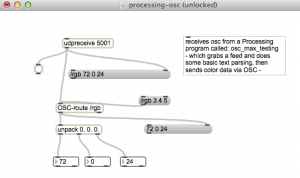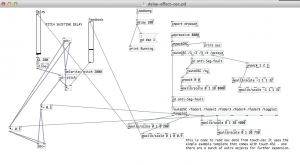After looking at hundreds of API’s over past months – models begin to emerge:
- Visualization: Looking at data by filtering, analysis, or factors defining movement.
- Synthesis: producing feeds from sources, in combination – fusion
- Transcoding: changing one type of signal into another
Or some combination of all three.
The best tools for getting data in and out of Max:
- curl (or variants in client libraries)
- JSON
- Osc
- string parsing outside of Max
- database tools (or data recorder in Max)
- basic data filtering and scaling tools in Max
- for complex networked systems: node.js





